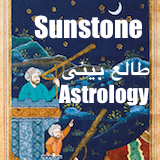The New Yorker:
Luisa Casati probably spent more money on clothes and jewels than any queen in history. Her fetishes and costumes no longer seem so outré.
By Judith Thurman
Few priestesses of fashion have been better endowed for their vocation than Luisa Casati, a Milanese aristocrat who was born in 1881 to immense wealth, and who, having probably spent more money on clothes and jewels than any queen in history, died penniless in 1957. The Marchesa was exceptionally tall and cadaverous, with a head shaped like a dagger and a little, feral face that was swamped by incandescent eyes. She brightened their pupils with belladonna and blackened their contours with kohl or India ink, gluing a two-inch fringe of false lashes and strips of black velvet to the lids. Her cheekbones were vertiginous, her nose aquiline, her mouth a lurid gash. She powdered her skin a fungal white and dyed her hair to resemble a corona of flames. This alarming mask, as Cocteau observed, gave men the illusion that the woman who wore it had willfully ravaged a great beauty—a beauty she didn’t, in fact, possess.
Casati’s totem animal, like Medusa’s, was the snake: a creature that sloughs its skin and mesmerizes with its stare. She prided herself on the freshness of the shocks her appearance delivered. Her contemporaries couldn’t decide if she was a vampire, a bird of paradise, an androgyne, a goddess, an enigma, or a common lunatic. Her clothes were as esoteric as the symbols on a wizard’s hat—formulas for improving on nature. Among her more memorable get-ups was a suit of armor pierced with hundreds of electric arrows that short-circuited and nearly fried her; an iridescent necklace of live snakes that slithered from her bare shoulders at a ball; and a headdress of peacock tail feathers accessorized, for a night at the opera, by the blood of a freshly slaughtered chicken.
Go to link










Comments